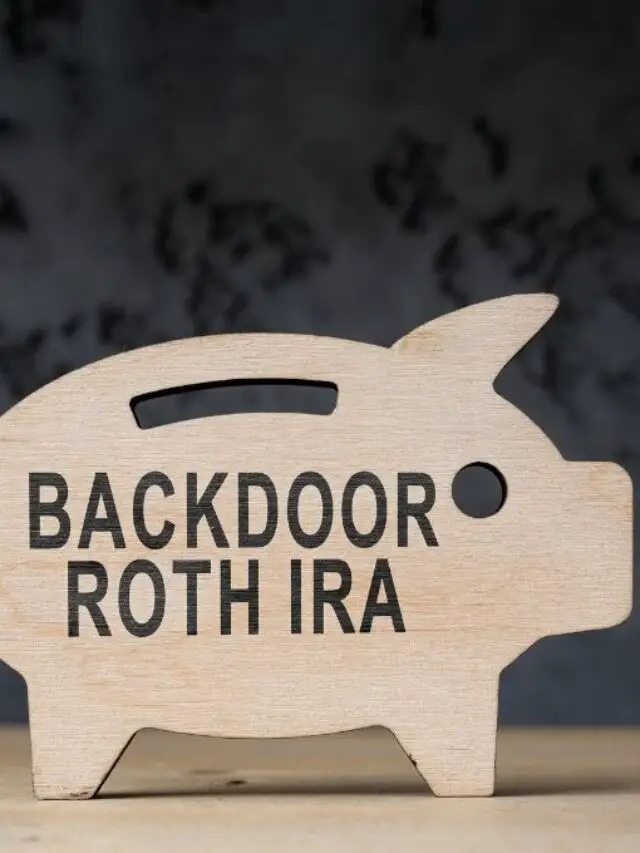In the enigmatic labyrinth of mortgage financing, two names recurrently surface, cryptic yet significant: Fannie Mae and Freddie Mac. The prevailing enigma is less about their nomenclature and more about their esoteric roles within the mortgage industry. This article—your cartographic guide—seeks to demystify these entities. What’s more, it intends to unfurl the layers of complexity that mark their indispensable roles, particularly if you’re contemplating acquiring a mortgage.
Table of Contents
| Key Takeaways | |
|---|---|
| ⇝ | Fannie Mae and Freddie Mac: Far from peripheral entities, they’re the bedrock underpinning the turbulent seas of the mortgage marketplace. |
| ⇝ | Navigating Qualifications: The labyrinth of eligibility, decoded. |
| ⇝ | A Double-Edged Sword: Scrutinizing the beneficial alongside the not-so-favorable aspects. |
| ⇝ | A Double-Edged Sword: Scrutinizing the benefits alongside the not-so-favorable aspects. |
Government-Sponsored Enterprises (GSEs) Deciphered
A Government-Sponsored Enterprise (GSE), quintessentially, exists as a unique hybrid, an intriguing convergence of governmental oversight with the dynamism of private enterprise. Think of it as a linchpin, facilitating flows between oversight and capital.
The Eclectic World of GSEs
| GSE Entities | Core Endeavors | Socioeconomic Contributions |
| Fannie Mae | Mortgage Liquidity | Aides in homeowner liquidity |
| Freddie Mac | Mortgage Equilibrium | Ensures market stability |
| Sallie Mae | Educational Finance | Facilitates student loans |
In this layered fabric, Fannie Mae and Freddie Mac emerge as titans, procuring mortgages from financial institutions. These are then meticulously either maintained as valuable portfolio assets or transformed into mortgage-backed securities. This cyclical dynamic is a conduit for liquidity, invigorating lenders with essential capital for further loans.
| Useful Tip |
|---|
| Historical precedence underscores the importance of due diligence. The GSE landscape, as evidenced by the 2008 financial crisis, is not an impregnable fortress. Exercise caution. |
| These GSEs, while paragons of stability on many fronts are not cloaked in invulnerability. Their intrinsic nature exposes them to economic flux, a topic that requires its own set of scrutinies and considerations. |
The Intricacies of What Fannie Mae and Freddie Mac Actually Do
When distilling the essence of Fannie Mae and Freddie Mac, one encounters a manifold of functionalities that stretch far beyond simple loan acquisition. These entities serve as multifaceted institutions, gatekeepers that not only acquire loans but also secure them, nurturing an ecosystem of financial stability.
Comparative Functions of Fannie Mae and Freddie Mac
| Criteria | Fannie Mae | Freddie Mac |
| Loan Acquisition | Primary market focus | Focuses on secondary market |
| Security Conversion | Extensively involved | Slightly less involved |
| Risk Management | Portfolio diversification | Hedging strategies |
The table above offers a mere glimpse into the variegated roles these GSEs play. Fannie Mae is generally more involved in the primary mortgage market, purchasing loans directly from lenders. On the other side, Freddie Mac often wades into the secondary market, balancing portfolios through calculated risk management.
| Useful Tip |
|---|
| The tip of the iceberg is merely that—a tip. Always dig deeper into each institution’s specific policies, loan types, and risk management strategies before making any financial commitment. |
The Tapestry of Time: An Elaborate Excursion into the Historical Backdrop of Fannie Mae and Freddie Mac
Conceived amid the throes of disparate economic landscapes, Fannie Mae and Freddie Mac have pedigrees that aren’t just rich but also convoluted. Their origin tales provide a fascinating, albeit complex, insight into the mechanics of American socio-economic evolution. We mustn’t merely glance at these historic footprints but scrutinize them, understanding how each landmark event has calibrated the operations and philosophies of these monumental entities.
Table: Historic Epochs and Their Imprints on Fannie Mae and Freddie Mac
| Epoch | Fannie Mae | Freddie Mac |
| The New Deal Era | Birthed to rejuvenate a crippled housing market | Not in existence yet |
| Mid-Century Realignment | Federal National Mortgage Association Charter Act realigns scope | Still a non-entity |
| Competitive Advent | – | Inception, to rival Fannie Mae in market influence |
| Financial Meltdown of 2008 | Federal conservatorship ensues | Likewise succumbs to federal oversight |
The table might encapsulate key epochs, yet it merely skims the frothy surface of a deeply layered history. Gazing at it closely reveals the imprint of seismic shifts in the economic terrain on both Fannie Mae and Freddie Mac, a complex interplay of regulatory overhauls and market volatilities.
| Useful Tip |
|---|
| It’s not merely about grasping historic milestones; it’s also about internalizing the minutiae. This nuanced understanding could lend you foresight into possible future trajectories these entities might follow. |
Navigating the Maze: How to Qualify for a Loan
Loan eligibility, understandably, is a topic mired in confusion, uncertainty, and often trepidation. Yet, attaining a loan approved by either Fannie Mae or Freddie Mac isn’t tantamount to conquering an insurmountable mountain.
Steps to Qualify for a Loan
- Credit Check: Begin with a comprehensive scrutiny of your credit score.
- Debt-to-Income Ratio: Calculate it. A lower ratio often catalyzes the approval process.
- Down Payment: Be prepared to part with a considerable sum upfront.
- Documentation: Gather all relevant financial documents. They offer a concrete narrative of your economic history.
These elements conglomerate to form a borrower’s financial profile, influencing the chances of loan approval.
| Useful Tip |
|---|
| Patience is a virtue but when it comes to loan approval, meticulous preparation pays dividends. Make sure you have not just a good, but an impeccable credit history. |
Advantages and Drawbacks of Fannie Mae and Freddie Mac Loans
When confronting the crossroads of loan acquisition, the paths leading to Fannie Mae and Freddie Mac offer not just promise but also pitfall. Tread carefully; the advantages can turn into disadvantages if not navigated with acumen and foresight.
The Dual Facets of Fannie Mae and Freddie Mac Loans
| Aspect | Advantage | Drawback |
| Accessibility | Widely available through multiple lenders | Stricter underwriting standards |
| Interest Rates | Generally lower | Fluctuations influence rates |
| Loan Types | Diverse options | Complexity can confound borrowers |
| Risk Mitigation | Government backing offers stability | Potential for governmental meddling |
As you can discern, choosing a loan from either entity is akin to a double-edged sword. The pluses are tantalizing: wide accessibility, lower interest rates, and diverse loan types. Yet, lurking behind are stringent standards, volatile rates, and the ever-present shadow of governmental interference.
| Useful Tip |
|---|
| When negotiating the intricate terrains of these loans, always arm yourself with abundant information. Knowledge, in this case, isn’t just power; it’s your navigational compass through the labyrinth. |
Conclusion: Synthesizing the Complex Landscape
We’ve journeyed through multifaceted landscapes—historical, functional, and prosaic—associated with Fannie Mae and Freddie Mac. The road has been undulating, but each twist and turn has illuminated essential facets of these powerful financial entities. Your steps toward understanding or utilizing their services ought to be both cautious and informed.
Additional Resources
- Financial Strategy Books: To deepen your knowledge
- Governmental White Papers: For legislative backgrounds
- Consulting Services: Navigate the complexities with expert help
Call to Action
Don’t just stand at the threshold; step boldly into the intricate world of Fannie Mae and Freddie Mac. Arm yourself with knowledge and proceed with discernment.
Frequently Asked Questions (FAQs)
- What is the primary difference between Fannie Mae and Freddie Mac?
Fannie Mae primarily deals with the primary market, while Freddie Mac is more involved in the secondary market. - Do these institutions offer loans to individuals?
Indirectly, they buy and secure loans through other lenders. - How are these entities regulated?
They operate under the purview of the Federal Housing Finance Agency. - What is a GSE?
A Government-Sponsored Enterprise, designed to improve credit flow in specific sectors. - What is a conservatorship?
A legal concept where an entity is put under the administrative control of another entity. - Do these entities influence interest rates?
Yes, but indirectly through market mechanisms. - How do Fannie Mae and Freddie Mac contribute to financial stability?
They buy and secure mortgages, providing liquidity to lenders. - What risks are associated with these entities?
Market fluctuations, policy changes, and governmental interference are some. - What kind of loans do they deal with?
Primarily conventional loans not covered by government guarantees. - Are these organizations private or governmental?
They are private organizations with government backing.
Prashant Chauhan
Author @ Finance RuffleMeet Prashant Pratap Chauhan, the savvy founder behind Finance Ruffle, a hub for sharp financial insights and expert analysis in the realm of finance blogging.




Pingback: Explore 2024’s 6 Best First-Time Home Buyer Loans And Programs: Your Quintessential Guide | Finance Ruffle
Pingback: 203k Loan: 5 Powerful Insights For Home Renovation Dreams | Finance Ruffle